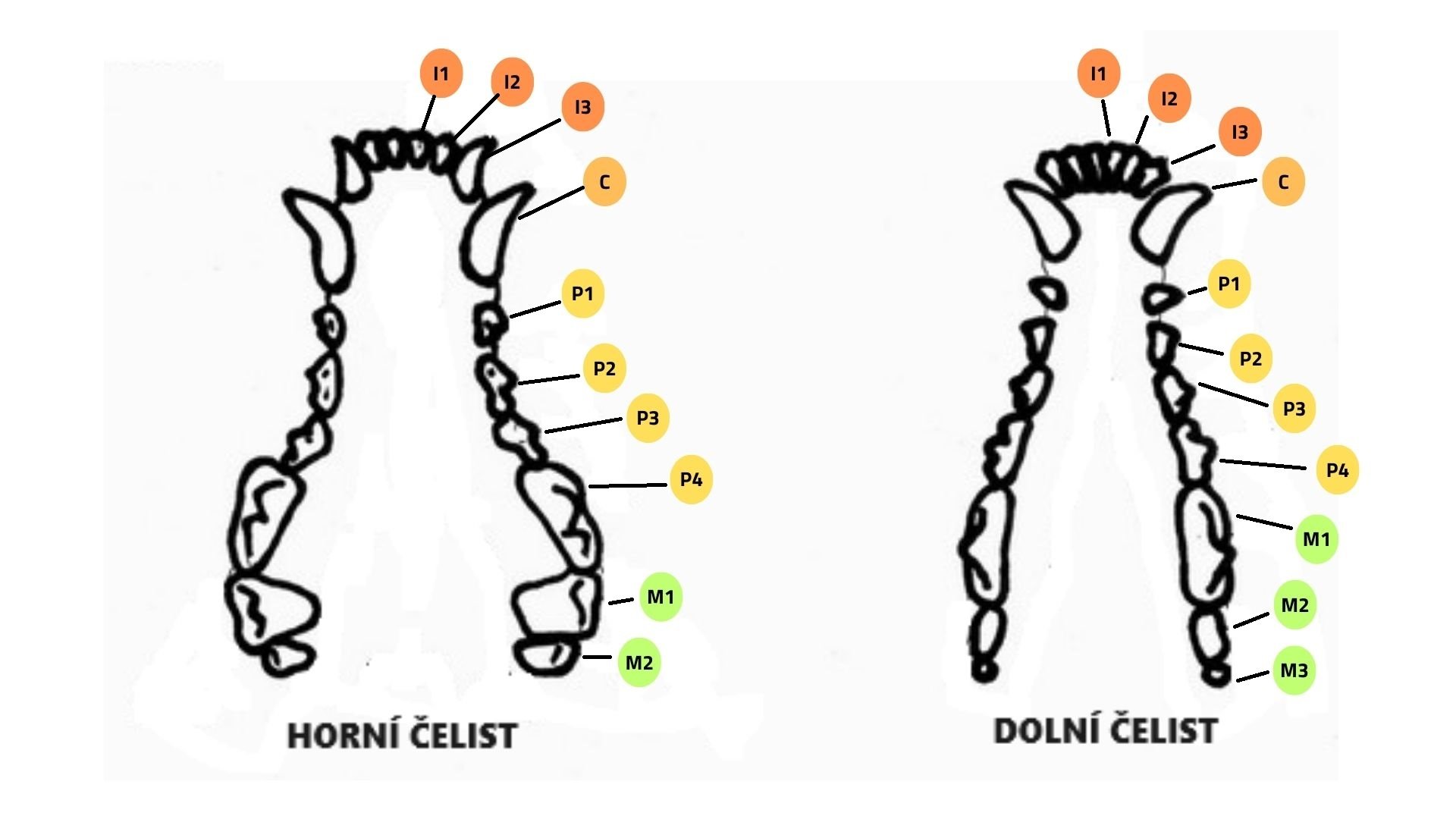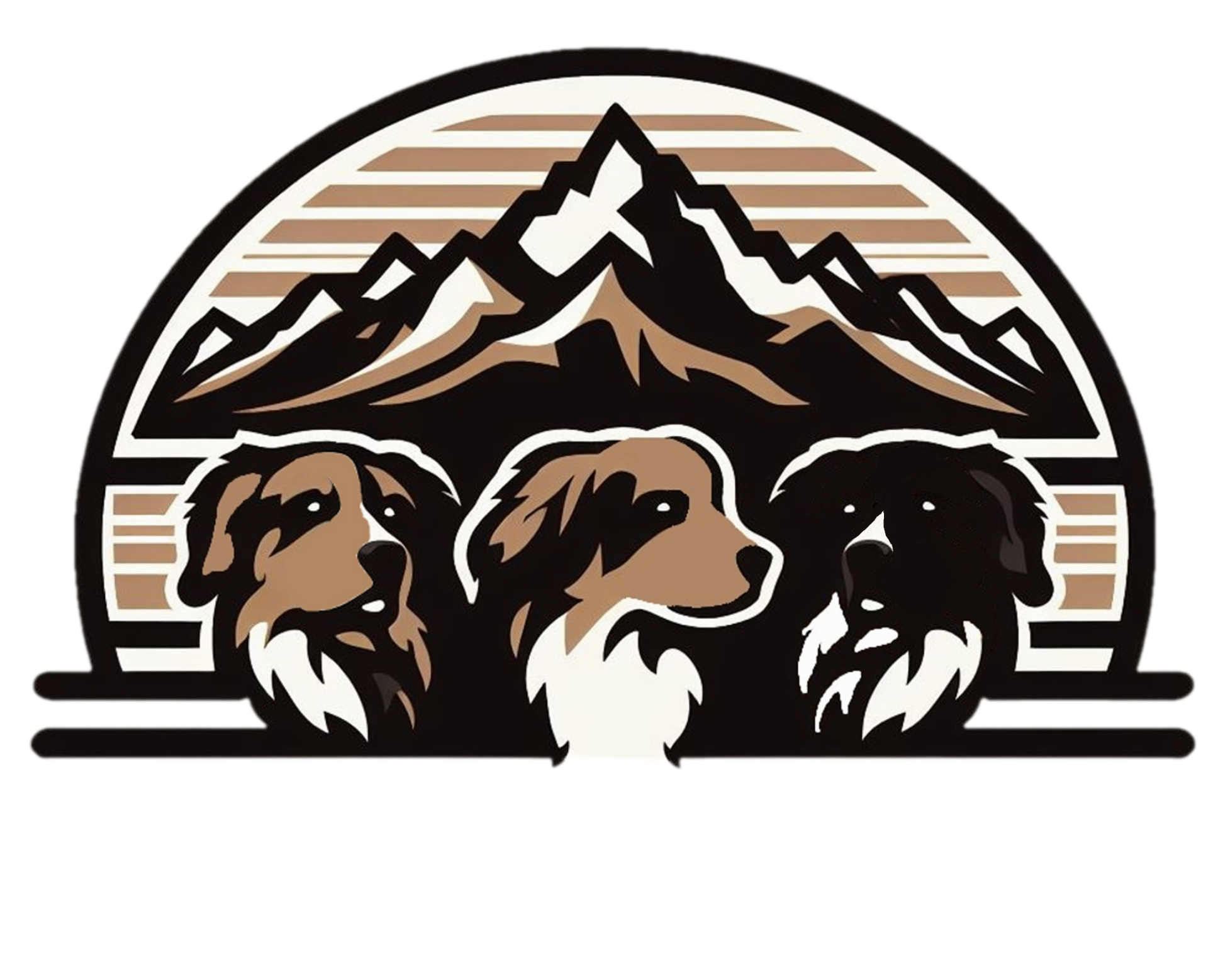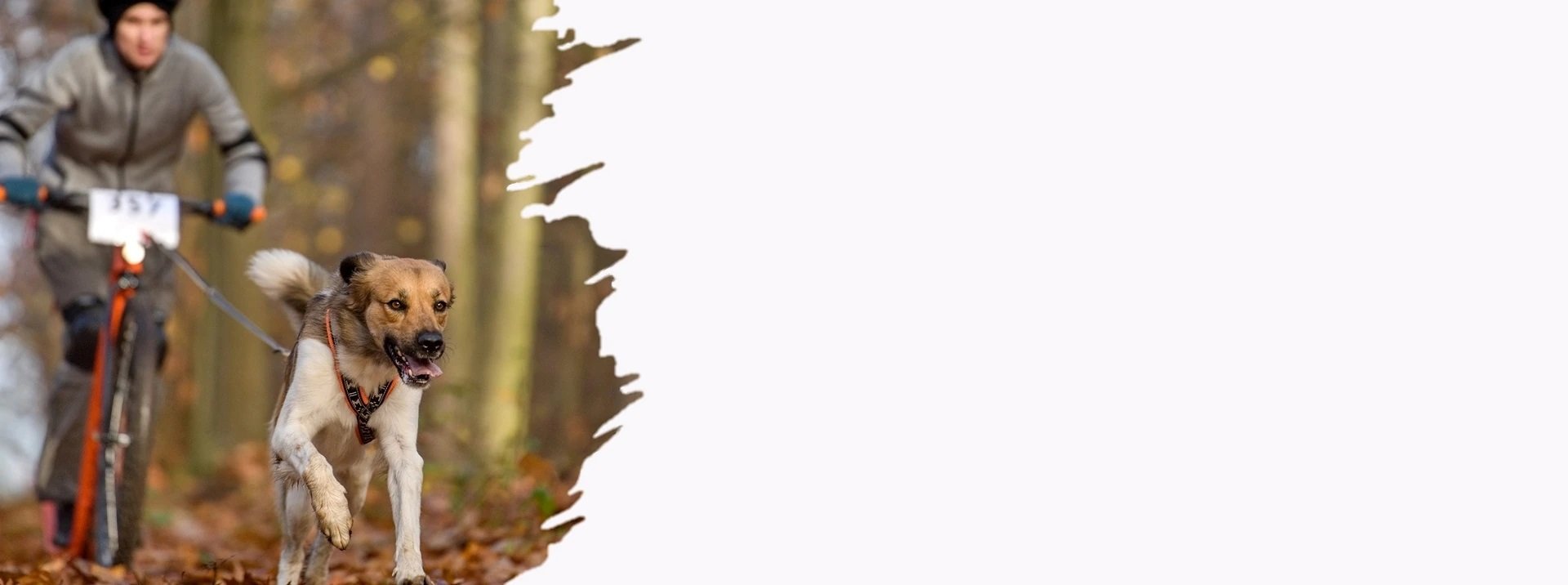Dogs are born with two sets of teeth. The first are milk teeth, just like humans. They will gradually be replaced by permanent teeth. Tooth replacement takes place from approximately the 3rd month and is completed around the 8th month of life. So if you observe your puppy more than usual and do not count all the teeth, do not panic. However, it can also happen that milk teeth do not fall out, and in this case they appear at the same time as permanent teeth. However, this is an undesirable condition and these teeth need to be professionally removed.
Milk teeth consist of 28 teeth
Id1,Id2,Id3,Cd,Pd2,Pd3,Pd4
Id1,Id2,Id3,Cd,Pd2,Pd3,Pd4
The permanent dentition consists of 42 teeth
I1,I2,I3,C,P1,P2,P3,P4,M1,M2
I1,I2,I3,C,P1,P2,P3,P4,M1,M2,M3

Did you know that the age of an animal can be estimated based on the cut of the teeth?
4 - 6 weeks - deciduous incisors are cut
5 - 6 weeks - milk molars erupt - the first premolar grows only as a permanent tooth
3 - 5 months - permanent incisors appear
4 - 5 months - the first molars appear
5 - 6 months - permanent second to fourth molars and second molars appear
5 - 7 months - permanent canines appear
6 - 7 months - third molars appear, at this age we often find double canines, i.e. milky and permanent side by side
Changing milk teeth for permanent teeth
During growth, the permanent tooth replaces the milk tooth and gradually pushes it out with its growth. By pressing on the root of the baby tooth, it closes its root canal, thereby stopping nutrition and making it easier for it to fall out later.
Retention of the milk tooth
If the permanent tooth does not sit on the root of the baby tooth during its growth in the gum, the situation described above occurs and the permanent tooth grows along the baby tooth. The root of the baby tooth is not disturbed and the permanent tooth grows in the wrong position. This causes the so-called retained milk tooth.
Related topics
- Types of dog bite

